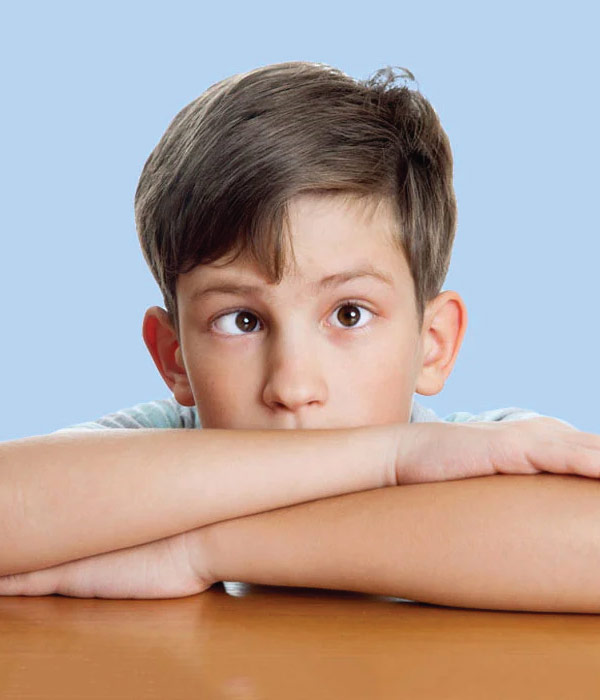Squint in Children

Functional, Cosmatic And Social Blemish
Squint and as a consequence of this loss of vision is amongst the most important cause of blindness in our country especially in children. It is unfortunate that ignorance regarding this subject persists not only in general population but also amongst doctors. The commonest misconceptions being that as the child grows up, squint will get corrected by itself though it occurs only in 1% of cases and secondly its treatment requires multiple surgeries and even then it does not get corrected.
These misconceptions delay the treatment and the end result is functional and cosmetic loss to the child. Since majority of deviated eyes at birth get aligned by 6 months of age, so any persistant deviation following that period requires immediate attention.
Squint or strabismus is a vision condition in which a person cannot align both eyes simultaneously under normal condition. One or both eyes may turn in, out, up or down. The eye – turn may be constant (when the eye turns all the time) or intermittent (when it turns some of the times such as under stressful condition or when ill). Whether constant or intermittent, it always requires appropriate evaluation and treatment.
INCIDENCE OF STRABISMUS
It is estimated that 2-3% of all children have some type or degree of strabismus.
Risk Factors :
- 1. Most commonly the tendency to have some type of strabismus is inherited. If any members of your family had strabismus, the condition is more likely to develop in your child.
- 2. Sometimes the condition is due to eyes being poor sighted or because of some muscle abnormality.
- 3. Very rarely strabismus may be secondary to serious abnormality inside the eye such as tumour, cataract or corneal opacity.
- 4. Prematurity, low birth weight, septicemia, cranio – facial anomalies are usually associated with strabismus.
How to Reduce Risk
Any cause of poor vision in one eye a child may lead to strabismus. There are many causes of poor vision in one eye but the major concern is tumour of retina (Retinoblastoma). So every child with strabismus should be screened to rule out this rare possibility. To detect poor vision, parents should take children for regular eye examination according to the following schedule:
- 1. Newborn at 3 months
- 2. Between 6 Months – 1 Year
- 3. At 3 Years
- 4. At 5 Years
However if your child notices any problem with his or her vision earlier, visit the doctor immediately.
Sequelae of Strabismus
Defective Binocular Vision:
To achieve fusion of the images of two eyes, the eyes need to be straight which gives us 3 – dimensional vision. 3 – Dimensional vision is used to judge depth which is required in driving/ parking a car, throwing or catching a ball, planning or building some object, shaking hands, stepping off a curb etc.
Reduction of Vision in the turned eye :
Children with strabismus initially may have double vision because of misalignment of eye in relation to one another. In an attempt to avoid double image, the brain will eventually disregard the image of one eye and that eye will lose vision permanently if not treated in time (Amblyopia or lazy eye).
Low Self Esteem:
Studies show that children having Squint have less confidence, poor social integration and develop more psychological problems in later life.
Treatment
The aim of treatment is to restore vision to each eye and to use both eyes simultaneously to achieve depth perception (3 – D Vision). Treatment includes patching the normal eye to bring the vision up to normal in the turned eye. Patching is combined with actively exercising the weak eye. The result of patching and active exercises along with oral medication is excellent till a certain age (usually 6 – 7 Years) and variable following that age group. Glasses and some eye drops may also straighten some of the eyes particularly which are out of focus. Exercise (Done on special equipment synoptophore) is helpful in controlling deviation especially in intermittent Squints but they have to be maintained for a longer duration. If all these conservative measure fail, surgery is required to achieve the desirable result.
The result of treatment may be good or excellent depending how quickly the treatment is begun. So do not delay if your child has strabismus and always seek advice from eye specialist.
